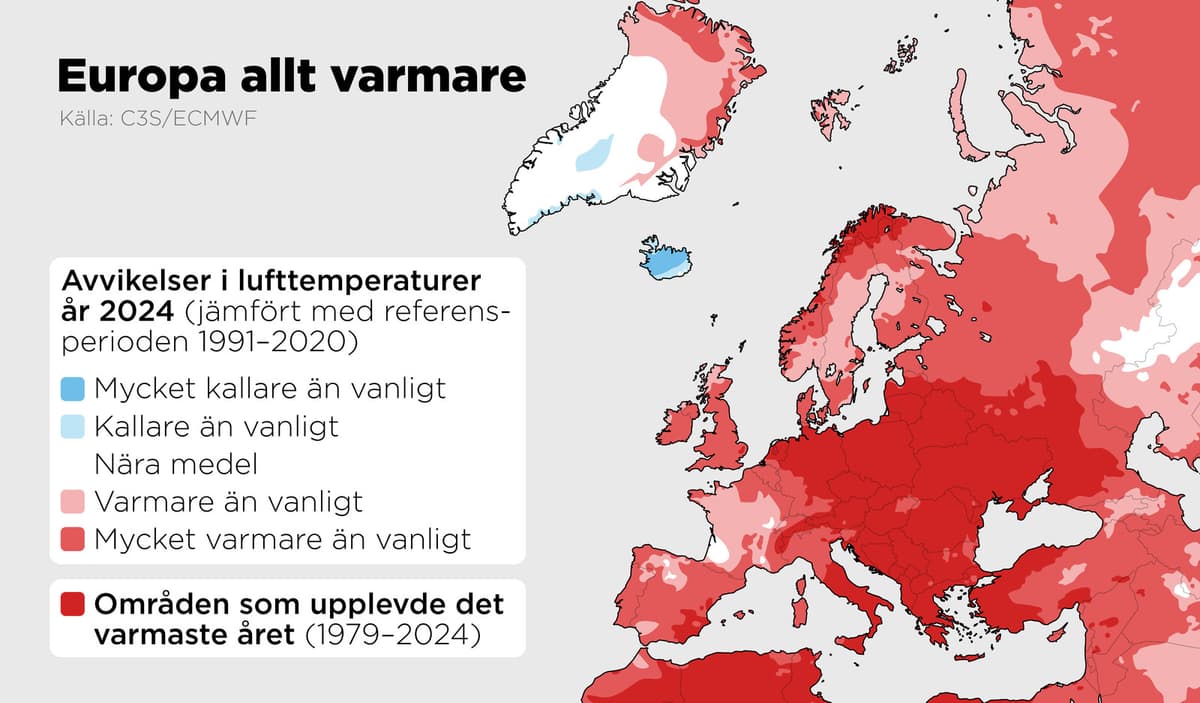Since the 1980s, the warming of the continent has been twice as high as the global average, partly because large parts of it lie in the Arctic, where warming is happening rapidly, according to the report "European state of the climate".
In 2024, there were 66 days of "strong heat stress", when the temperature felt like at least 32 degrees, in southeastern Europe.
They experienced six heatwaves from June to September 5, including the region's longest at 13 days. Sometimes, there were only three to four days between the heatwaves, says Samantha Burgess, deputy chief at the Copernicus climate change service C3S.
A worrying trend is that there are more tropical nights, when the temperature does not drop below 20 degrees. Southeastern Europe had 23 such nights last year, far more than the previous record of 16 from 2012. The warm nights mean that the body does not get a chance to recover from heat stress during the days.
Intensive rainfall
However, there were large differences between east and west. Western Europe experienced one of the ten wettest years since 1950, with the worst flooding since 2013. More than 400,000 people were affected, and 335 died. Central Europe was hard hit by storm Boris in September, where three months' worth of rain fell in five days.
In late October, Spain was hit by flooding that claimed hundreds of lives in Valencia.
Many of these floods have been related to very intense local rainfall. This could be driven by high temperatures in the atmosphere, which means it can hold more water vapor, says Carlo Buontempo, head of C3S.
Ten times worse
Just the damage in Spain is estimated to cost more than 180 billion kronor. By the end of the century, damage to buildings and other infrastructure caused by extreme weather due to climate change could be ten times greater compared to today.
A growing part of the population lives in cities, so this will become an increasingly important issue, says Andrew Ferrone.
Another record was that the share of renewable energy produced reached 45 percent, despite the weather conditions making it difficult to generate wind and solar power.
Since 2019, the number of countries on the continent where at least half of the energy generated is renewable has increased from 12 to 20, due to the expansion of solar and wind power.
Gustav Sjöholm/TT
Facts: European climate 2024
TT
Every year, the EU's climate service Copernicus, together with the UN's World Meteorological Organization (WMO), produces a report on the climate in Europe, called "European state of the climate".
About 100 researchers are involved in the work, which is based on 40 datasets and 40 different climate variables. The data comes from, among other things, satellites and ground stations.
2024 became the warmest year ever recorded. In eastern and southeastern Europe, temperatures were 2–3 degrees above normal. The Mediterranean was also warmer than ever, with 21.5 degrees (1.2 degrees warmer than the average and 0.3 degrees warmer than the previous record year 2023).





